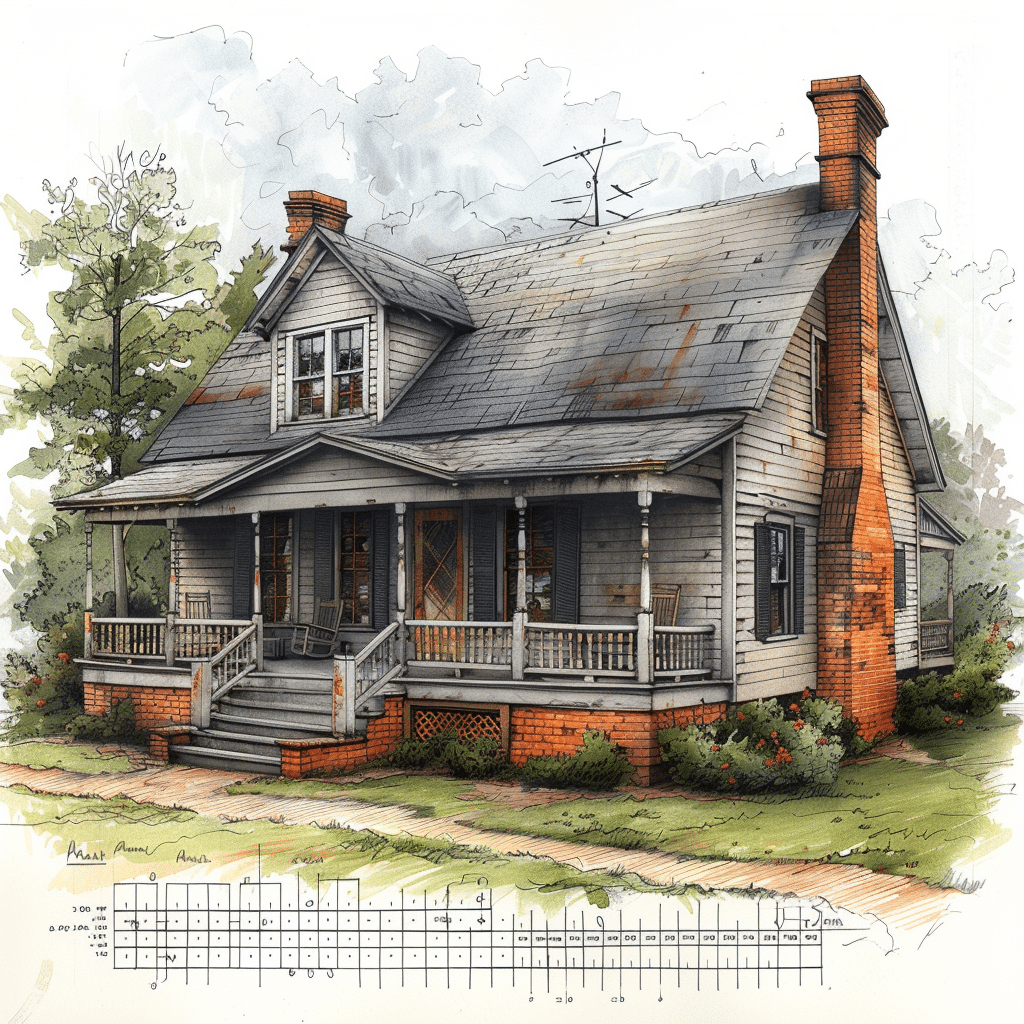Deciphering the Historical Mortgage Rates Graph: A Journey Through Time
When you cast an eye over the sweeping arcs and dips of a historical mortgage rates graph, you’re not just viewing numbers—you’re witnessing the heartbeats of economic history. Each rise and fall is a reflection of the times, with spikes telling tales of turmoil and declines whispering of prosperity or policy shifts. For instance, remember when the Barnacles on humans article took the internet by storm, captivating and unsettling readers? Just like that piece, the historical mortgage rates graph holds a fascination by charting the unexpected vicissitudes of our economy.
Take a moment to consider the stark leap during the early 1980s, when rates skyrocketed due to inflationary pressures. In contrast, let’s unpack the Great Recession, where rates nosedived, painting a grim picture of a wounded economy. It’s clear: the graph is a visual saga where each point is knit into the larger fabric of the nation’s and world’s economic narrative.

Analyzing Decades of Data: 1980s to Present in the Historical Mortgage Rates Graph
Rolling back to the 1980s, let’s set the scene. We see a spike that seems to vault towards the sky, with mortgage rates peaking at a brow-furrowing 18%. Whoa! The high-flying rates were fueled by strong inflationary forces and a determined Federal Reserve, dead set on taming the inflation dragon.
Fast forward to the mortgage rate history chart of today, and we’re looking at a landscape of historic lows not seen in a generation, a response to different economic puzzles laid before us by the 21st century. Between these endpoints, we’ve ridden the rollercoaster of booms and busts, tech bubbles, and pandemics—each leaving its mark on the graph like lines etched in the sands of time.

| Year | Average 30-Year Fixed Rate | Notable Economic Events Impacting Rates |
| 1980 | 13.74% | Recession; high inflation |
| 1985 | 12.43% | Economic recovery; still high inflation |
| 1990 | 10.13% | Recession begins |
| 1995 | 7.93% | Economic boom; low inflation |
| 2000 | 8.05% | Dot-com bubble burst |
| 2005 | 5.87% | Housing boom; low rates incentivized |
| 2010 | 4.69% | Post-financial crisis; quantitative easing |
| 2015 | 3.85% | Continued recovery; still low rates |
| 2020 | 3.11% | COVID-19 pandemic; economic stimulus |
| 2021 | 2.96% | Record low rates |
Beyond the Numbers: What the Historical Mortgage Rates Graph Doesn’t Show
While the historical mortgage rates graph is awash with color and movement, it’s hush-hush on the full story of people’s dreams and hardships. It doesn’t show the sweat of the family striving for a Single-family home, or the sleepless nights of homeowners wrestling with the threat of foreclosure.
The graph omits the thrills and woes of mortgages secured or denied, the influence of tech advancements, and changing demographics that twist and shape the narrative of home ownership. It’s a picture incomplete, for mortgage availability and lending criteria, which swing doorways to opportunity wide or slam them shut, are invisible on its canvas.
2008 Financial Crisis vs. 2020 Pandemic: Comparing Historical Mortgage Rates Graph Impacts
Peering into the historical mortgage rates graph for this face-off, we grasp the true nature of economic calamities like the 2008 financial crisis and the 2020 pandemic. While both cascaded rates downward, each set a different stage.
The 2008 turmoil sent shockwaves, with rates playing hopscotch as the markets sought solid ground—banks became wary, lending tightened, and the housing market walked a tightrope. But then, out of left field came the 2020 pandemic, shaking the ground anew, and rates nosedived to record lows in a bid to keep the economic boat from capsizing amidst global lockdowns.
Lessons from the Graph: How Historically Low and High Mortgage Rates Influenced the Market
The graph is a treasure trove of lessons; a high mortgage rate era is akin to a market in gridlock—the dream of homeownership spiraling out of reach for many. Conversely, low rates are a siren’s song, beckoning buyers and inspiring a tsunami of refinancing, as seen in the troughs following 2008 and 2020.
Insights leap off the page, like in the early 2000s when rates took a gentle slide southward, propelling a marketplace frenzy, or in the somber days post-2008, when homeowners harnessed record-low rates as a life raft amidst the financial squall.
Predicting the Future: Using Historical Mortgage Rates Graph as a Crystal Ball
Can this graph be our financial soothsayer, hinting at what’s beyond the horizon? While past patterns shed light on trends, caution should be the watchword. The reliability of its prophecy is tethered to a myriad of wild cards—the whirlwind of tech evolution, policy shifts, and societal transformations.
Drawing on the mortgage rates chart history, the savvy mind ponders, but all should heed the lesson that while history rhymes, it rarely repeats with perfect fidelity.
A Global Perspective: Historical Mortgage Rates Graph in an International Context
Comparing the heartbeat of U.S. mortgage rates with international counterparts unveils a tale of intertwined destinies. Major economies like the EU, Canada, and Japan mirror and diverge from U.S. trends, each with its own story etched into their rates graphs.
Analyzing these variances, we catch glimpses of the nuanced impact of global economic dynamics and foreign housing policies. One can sail through this sea of information, appreciating the subtle and not-so-subtle influences these global tides have on the domestic shores of U.S. mortgage rates.
Harnessing the Power of the Historical Mortgage Rates Graph for Smart Home Buying
Let’s roll up our sleeves and dig into the graph, eh? For the prospective homeowner, understanding its ebb and flow is like finding a compass in a wild forest—it’s your guide to making smart, timed moves in the property game.
Like reading tea leaves, the graph lays before us historical trends and patterns that, if wielded wisely, sharpen our bargaining skills and fortify our projections on the long-term steak of homeownership.
A Futuristic Glance: Innovations in Mortgage Rate Prediction and Analysis
Exciting tech developments are revolutionizing our view of the historical mortgage rates graph. Artificial intelligence (AI) and machine learning are turning the tables, transforming dry data into dynamic oracles of insight.
Armed with these high-tech tools, investors and homebuyers could be marching towards an era of unprecedented clarity in mortgage rate predictions—a seismic shift promising sharper decision-making in the murky waters of the future property market.
Crafting Strategies around the Historical Mortgage Rates Graph for Long-Term Investment Success
Tapping into the historical mortgage rates graph offers an edge as sharp as a Flowbee—cutting through the noise for those eyeing long-term investment in real estate. It’s high time to devise blueprints utilizing data-driven strategies, contemplating the careful timing of market entry and keeping an eye on diversification to weave a safety net under the trapeze of investment risk.
Like chess masters, investors use the graph to predict the next best move, ensuring their portfolio remains nimble, responsive, and resilient, no matter how the winds of mortgage rates blow.
An Ongoing Narrative: Continual Developments Influencing the Historical Mortgage Rates Graph
As we stand on the cusp of tomorrow, new plots are brewing on the horizon that will etch their way onto the graph—a presidential election, whispers of a new housing reform, or the question on every lip, What Is Tcf program? These factors are the latent ink ready to script the forthcoming chapters on the evocative canvas of the historical mortgage rates graph.
Each impending economic pulse, each societal shift, promises to become the next punctuations in the tale the graph narrates, as it continues to be a living document of our collective financial journeys.
From Analysis to Action: The Role of the Historical Mortgage Rates Graph in Anchoring Real Estate Decisions
This graph, bursting with decades of data, is far more than a visual gimmick. It stands as a bedrock of knowledge, anchoring the strategizing of buyers, sellers, and the wise counselors of the real estate domain.
For those game to dive into the nitty-gritty of mortgage rates, this graph is akin to a tale as enrapturing as the a knight ‘s tale cast—captivating its audience with rich narratives. May we all engage with it—not just as dry data but as the resonant guide that helps chart a course through the thrilling expedition of real estate investment.
Unpacking the Historical Mortgage Rates Graph
Well, isn’t digging into the history of mortgage rates a wild ride? Just a quick peek at a historical mortgage rates graph and bam! You’re smack in the middle of a financial time capsule. For starters, did you know the high and low spikes on the graph can be like your very own financial rollercoaster? Picture this: back in the roaring ’80s, folks were grappling with sky-high rates that could make your hair stand on end—seriously, we’re talking double digits that seemed to soar as high as those funky hairstyles!
Moving right along, let’s shuffle down memory lane to a groovy time before the internet craze—think disco and bell-bottoms. If you check out the mortgage rate chart history, you’ll spot that rates were refreshingly low. It’s enough to make you wanna boogie, right? It’s like today’s gamers finding a vintage arcade—isn’t that a kick in the pants? The rates from back in the day have a charm that’s hard to find in modern times. It’s like cracking open a time capsule and finding a stash of mood rings and pet rocks—pure gold!
Jump cut to the turn of the millennium, and you’ve got a genuine plot twist. The historic lows that hit the charts were like a sweet dream for homebuyers and refinancers alike. You know, when the going gets good, everybody wants in on the action—much like when beanie babies were the rage, except with a much better return on investment. And let’s not overlook the fact that these dips and peaks are more than just numbers; they’re markers of the nation’s economic heartbeat.
Talk about a journey, huh? It’s almost like a secret language—those zigzags and trends have so much to say about the times they represent. Come to think of it, each blip on that graph is like a storytelling dot-to-dot, revealing the drama of economic booms, uncertainties, and the hustle and bustle of policy changes. So, who knew that the humble mortgage rate chart history could serve up such a sizzling slice of Americana?




